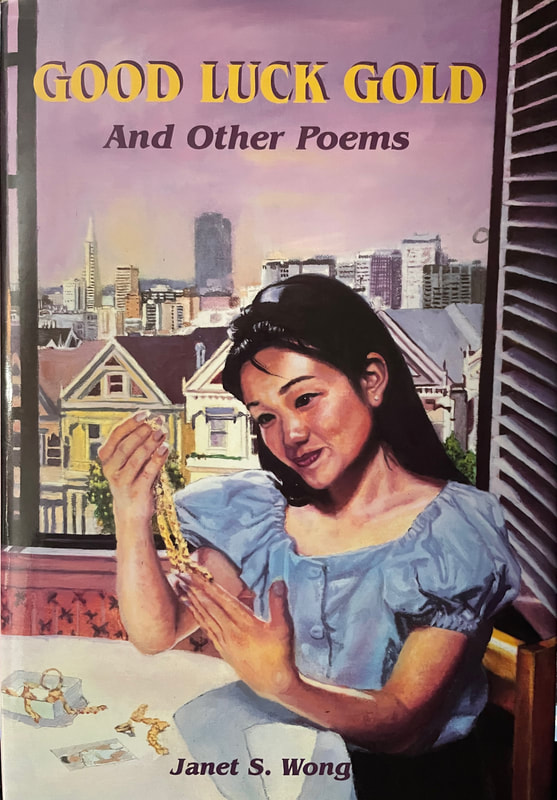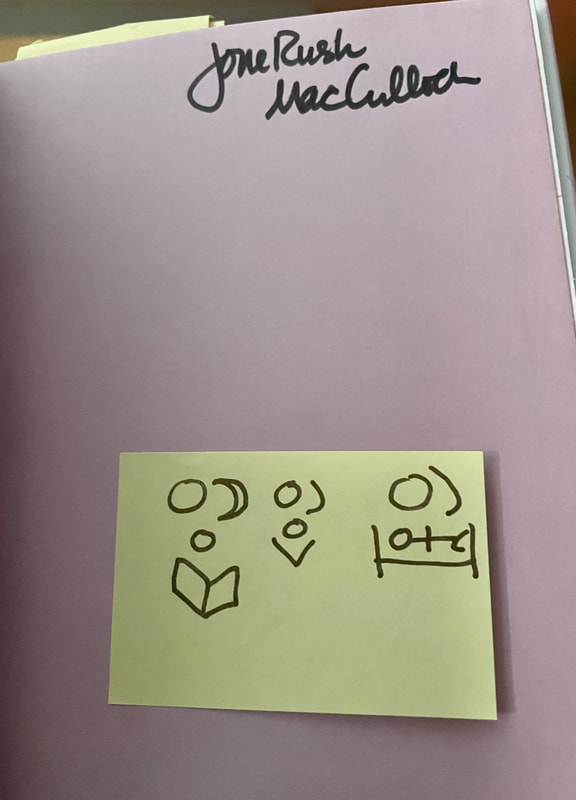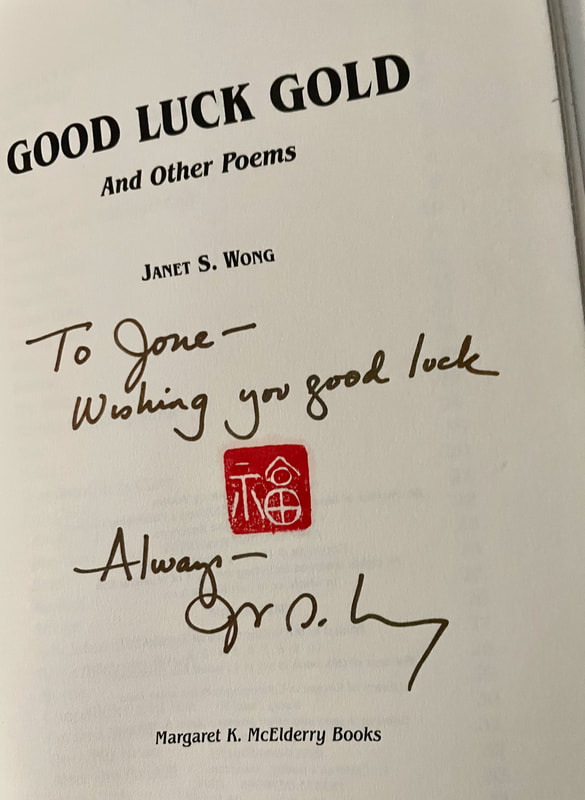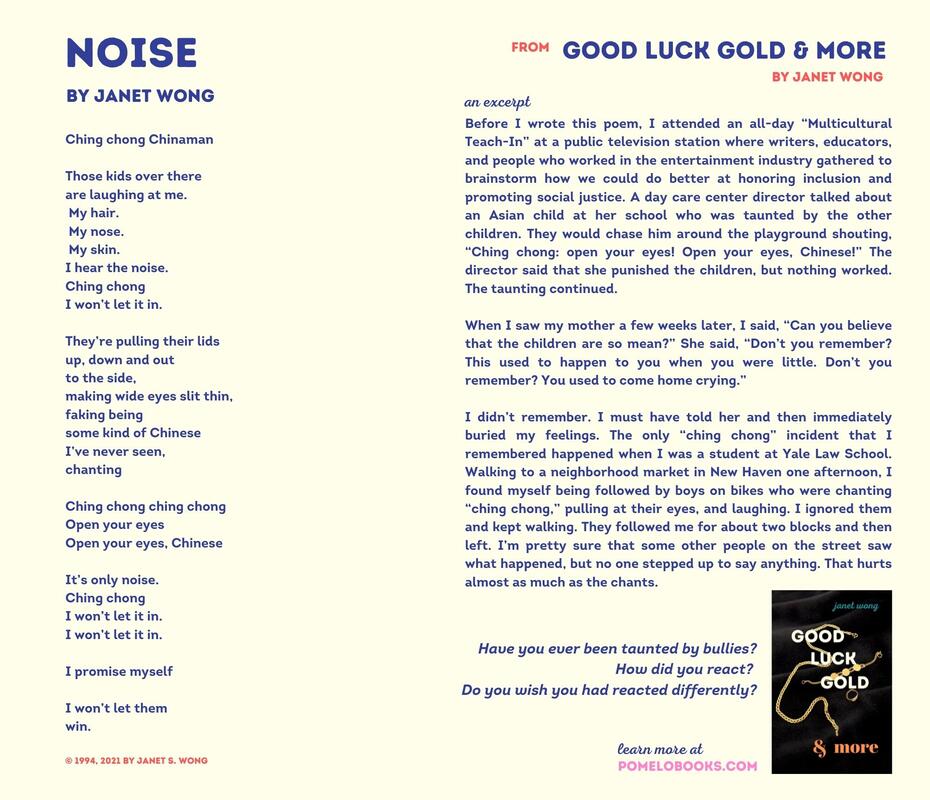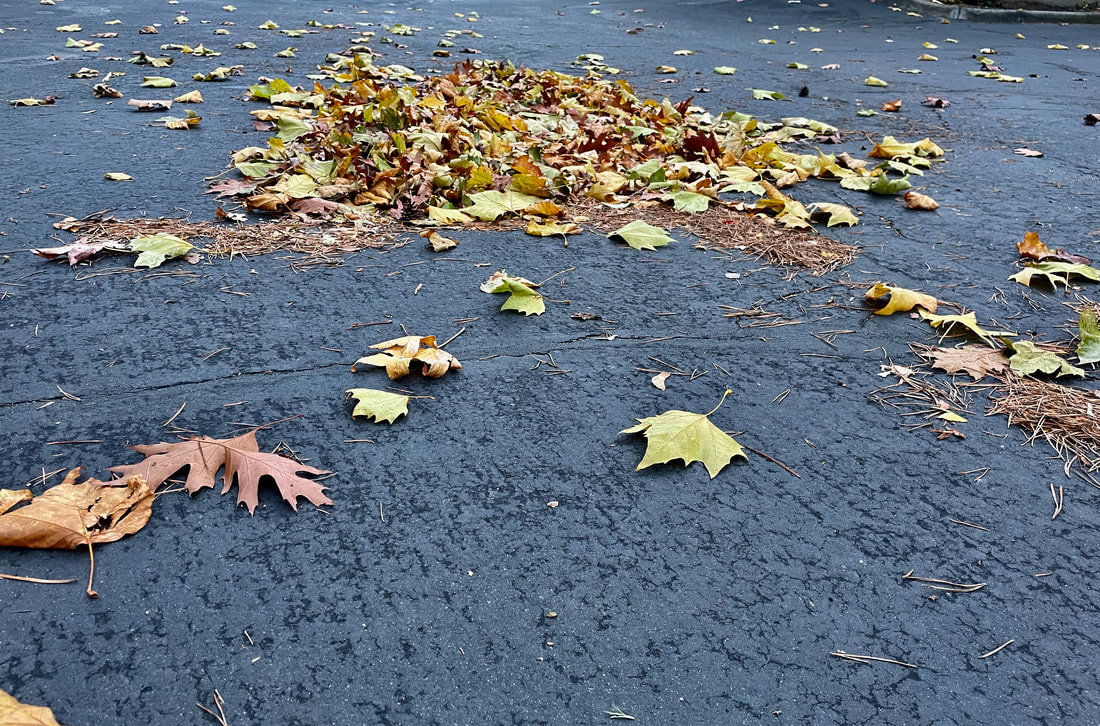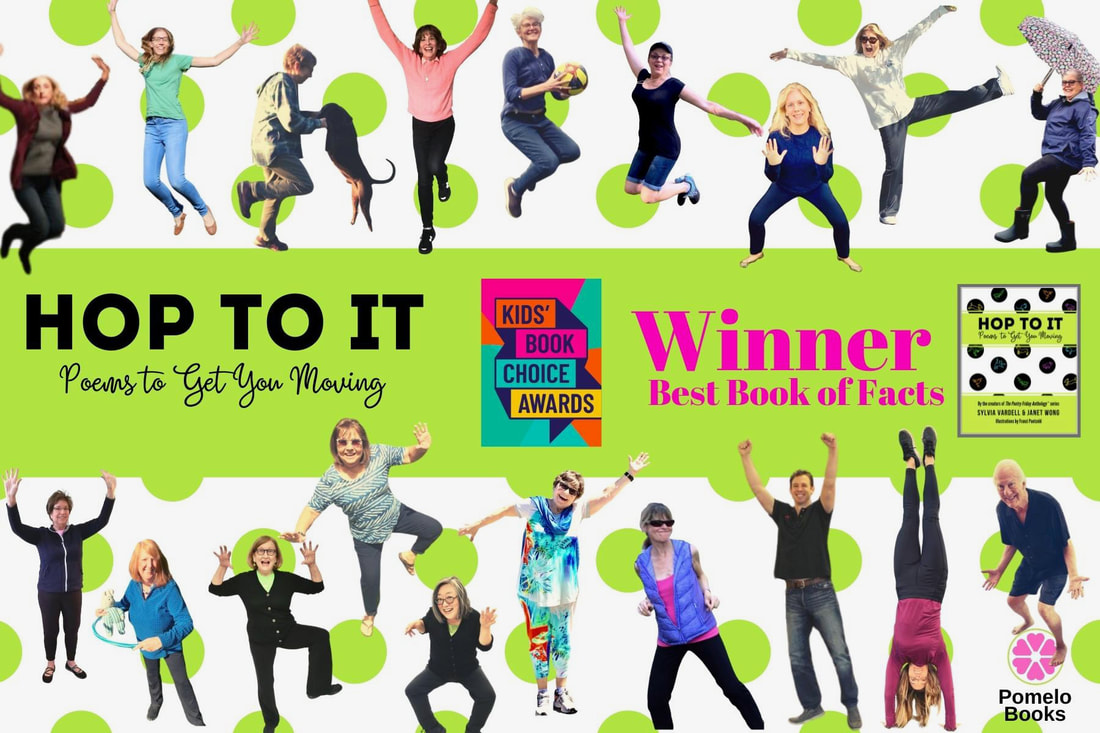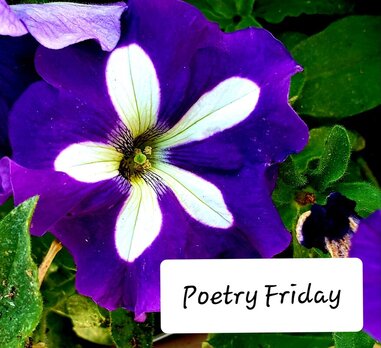 Thanks to Mary Lee Hahn for hosting the Poetry Friday Community this week. Her post is up and includes the Inklings challege for November: “Write a poem that includes the idea of percentage or percent. Percentages are all around us in recipes, prices, assessments, statistics. Include the idea of percentage in your poem in some way.” Thanks, Linda Mitchell for the idea. #inklings Do you like challenges? The Poetry Sisters have an invitation: You’re invited to join our challenge for the month of November! We’re writing an Ode to Autumn. An ode is a lyrical poem, a way of marking an occasion with a song. Whether you choose an irregular ode with no set pattern or rhyme, or the ten-line, three-to-five stanza famed by Homer himself, we hope you’ll join us in singing in the season of leaf-fall and pie, and sharing on November 26th in a blog post and/or on social media with the tag #PoetryPals. 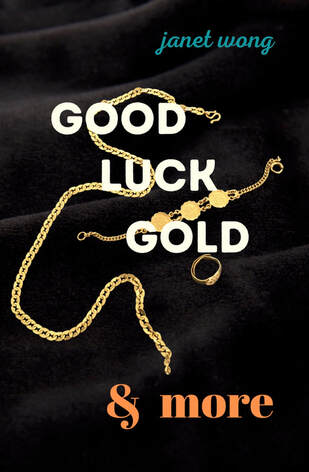 I've been reading GOOD LUCK GOLD and MORE by Janet Wong. This is her re-issue and expanded collection of poems from her DEBUT book in 1994. I have the original book signed by her. I highly recommend this book be in every elementary and middle school for sure. These poems are timeless. I remember reading them twenty-seven years ago and being astonished by the treatment given to the author and now reading them they still give me pause at how some humans treat others. The “story behind the story” or “story after the story” additions are powerful and provide such a good bridge to talk to students about racism. In preparing for this blog post and next week's post, she and I put together that I attended a joint library conference for Oregon and Washington in the late 1990's. At the time, Janet used a chop with the ancient Chinese pictogram for good luck (not the contemporary Chinese character). Janet would encourage people to make their own pictogram showing what their personal vision of good luck (or a lucky day) would be. Mine lucky day would be reading all day (sun + moon + head + book). She drew two versions of a book, traditional and simplified. I must have also said that being able to nap outside was another lucky day. (sun + moon + head and body in bed). JRM:What were your favorite books as a child? How aware were you that books about Asian characters weren’t available? (I’m thinking how there are students I know that would love to read this book and see themselves in it. I remember getting it for the library when it first came out) JW: I was totally oblivious to the lack of Asian faces in the books I read—but part of that was likely because, as a very young child, most of my favorite books featured animals. The Story of Bubbles the Whale was my tip-top favorite; I had fallen in love with the pilot whale Bubbles on trips to Marineland. When we talk about diversity and inclusion and children being able to “see themselves” in a book, I worry that we sometimes think too restrictively. If anyone had pressed me to talk about it, I would’ve identified as much as a “Bubbles fan” as I did as an Asian American. That being said, if there had been a book featuring Bubbles AND a short, plump Asian American girl who loved watching TV and eating shrimp chips, that would’ve been PERFECT. JRM: Wow, I remember Marineland and I was a tiny bit sad to learn it no longer exists recently. GOOD LUCK GOLD was your debut book for kids in 1994. What was it like to take a class from Myra Cohn Livingston? JW: Myra Cohn Livingston mentored a whole generation of children’s poets in her Master Class in Poetry. This was a UCLA Extension class that was offered only to those Beginning Class alums who were invited by Myra; there was seldom an opening. As a result, Myra’s Beginning Class was full of students who had taken it five or more times and were not beginners at all: Monica Gunning, Kristine O’Connell George, Joan Bransfield Graham, and more. Some people who took Myra’s classes were published picture book writers who wanted to know more about poetic techniques: Alice Schertle, April Halprin Wayland, Ruth Bornstein, and Tony Johnston, for example. Earlier this year I was invited by Julie Hedlund to speak with the 12x12 group, and I felt like I was channeling Myra with my emphasis on assonance, consonance, and internal rhyme. Myra died in 1996, but you can still learn from her book Poem-Making: Ways to Begin Writing Poetry (now out of print, but you can find it at a library). JRM: How long did it take to write the forty-two “story behind the story” or “story after the story”? Did you go back through old journals and notes to write the new additions? JW: It took about six months. It was a difficult project because several of the poems are about unpleasant topics such as racism and bullying. It was really important that the prose pieces and writing prompts were engaging enough to draw the reader in. I hope this book helps families and teachers and librarians to get kids talking about important issues—and working toward change. JRM: What surprised you when you were writing the additional content? JW: I was surprised by how vividly I remembered details from some things that happened when I was in my 20s. I still remember the “ching chong Chinaman” taunting from when I was in law school as clearly as if it happened last week. And yet I had blocked out my childhood memories of those similar incidents. JW: Sylvia Vardell and I plan to continue with our Anthologies 101 and 201 courses next year, working on books similar to the THINGS WE DO book of ekphrastic poems with your fun poem "ZOOM,” Jone. People can learn more about these workshops at our website here. [link: https://pomelobooks.com/anthologies-101] Next up for the January/February 2022 Anthologies 201 group is THINGS WE EAT, a topic near and dear to my heart (and stomach). One of the photos that Sylvia and I have selected features a Korean restaurant scene and the word "kimchi." I am super excited for that book—you could even say I’m hungry for it! JRM: Ooh, I love this idea. Food is such a great topic to write about. I did that as a topic for National Poetry Month in 2020. Next week, I will have the second half of Janet Wong's interview. I'll be sharing about why 100% of the proceeds of the book will going to #StopAsianHate and bystander training. BONUS: Janet is offering six books for prizes. Three this week and three next week. Comment on this blog post. Win a copy of GOOD LUCK GOLD and MORE. Janet will generously send one to the winners. Good Luck! |
AuthorAll photos and poems in these blog posts are copyrighted to Jone Rush MacCulloch 2006- Present. Please do not copy, reprint or reproduce without written permission from me. Categories
All
Archives
March 2024
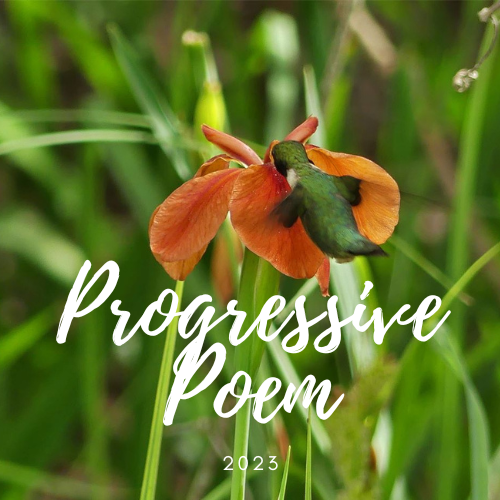
2023 Progressive Poem
April 1 Mary Lee Hahn, Another Year of Reading April 2 Heidi Mordhorst, My Juicy Little Universe April 3 Tabatha, The Opposite of Indifference April 4 Buffy Silverman April 5 Rose Cappelli, Imagine the Possibilities April 6 Donna Smith, Mainely Write April 7 Margaret Simon, Reflections on the Teche April 8 Leigh Anne, A Day in the Life April 9 Linda Mitchell, A Word Edgewise April 10 Denise Krebs, Dare to Care April 11 Emma Roller, Penguins and Poems April 12 Dave Roller, Leap Of Dave April 13 Irene Latham Live You Poem April 14 Janice Scully, Salt City Verse April 15 Jone Rush MacCulloch April 16 Linda Baie, TeacherDance April 17 Carol Varsalona, Beyond Literacy Link April 18 Marcie Atkins April 19 Carol Labuzzetta at The Apples in My Orchard April 20 Cathy Hutter, Poeturescapes April 21 Sarah Grace Tuttle, Sarah Grace Tuttle’s Blog, April 22 Marilyn Garcia April 23 Catherine, Reading to the Core April 24 Janet Fagal, hosted by Tabatha, The Opposite of Indifference April 25 Ruth, There is no Such Thing as a God-Forsaken Town April 26 Patricia J. Franz, Reverie April 27 Theresa Gaughan, Theresa’s Teaching Tidbits April 28 Karin Fisher-Golton, Still in Awe Blog April 29 Karen Eastlund, Karen’s Got a Blog April 30 Michelle Kogan Illustration, Painting, and Writing |
